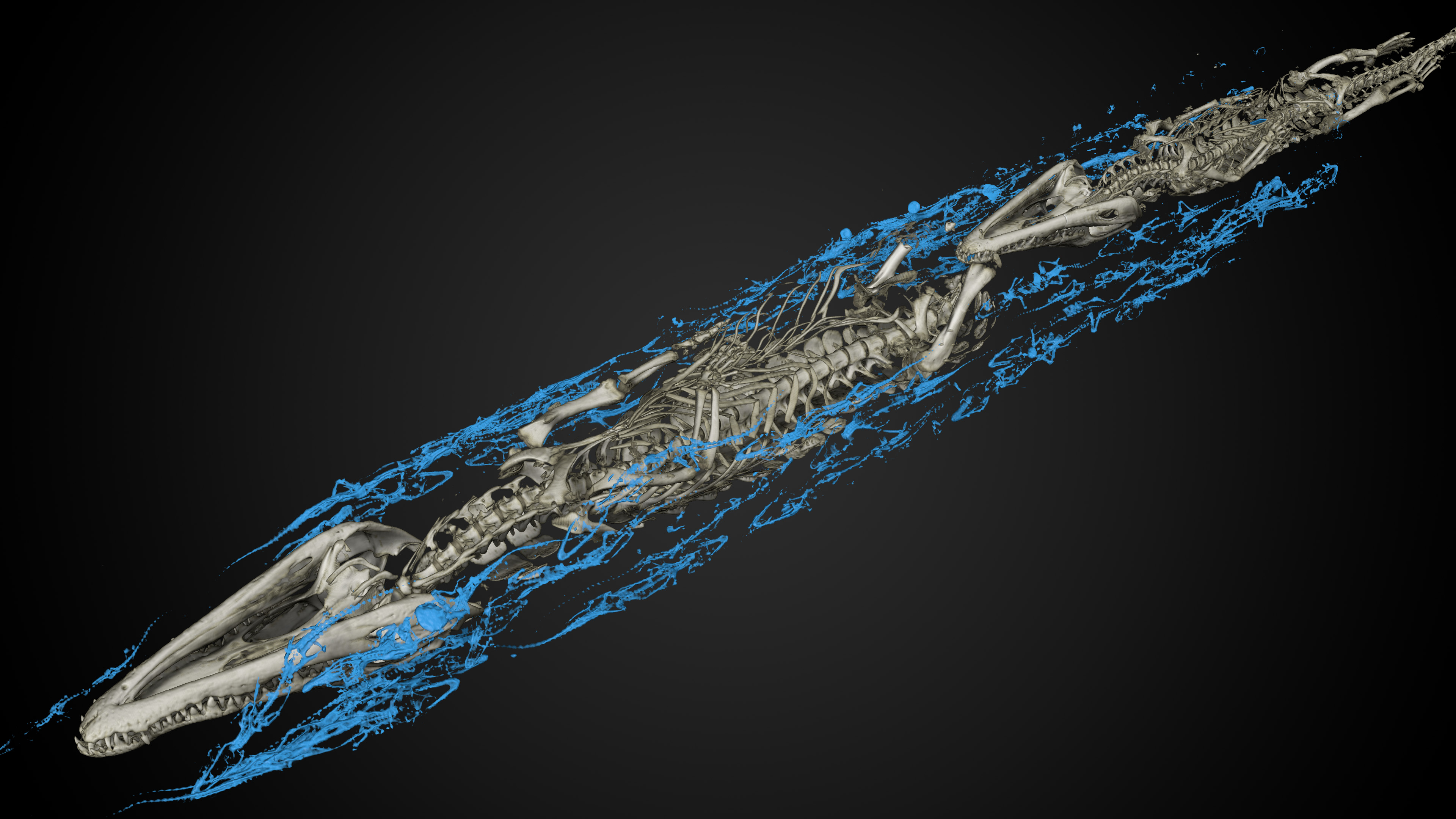Art World
At Least 47 Baby Crocodiles Found Inside Mummy at Dutch Antiquities Museum
High-tech scans revealed dozens of surprises.

High-tech scans revealed dozens of surprises.

Alyssa Buffenstein

The Dutch National Museum of Antiquities in Leiden reopened its Egyptian galleries last month after nearly a year and a half of renovations. During that time, it undertook a high-resolution X-ray scanning project of two of the mummies from its collection, and found that one was “literally filled with surprises,” as museum curators Dr. Lara Weiss and Professor Dr. Maarten Raven said in a statement.
The “giant crocodile” mummy, previously believed to be just two adolescent crocodiles wrapped together in the shape of one large one, was found to actually contain a whopping 47 baby crocodiles wrapped around the 2,500-year-old duo.
“You can’t see them very well on the old scans unless you know they’re there, says curator Dr Lara Weiss, “and we never expected to find this.”

A visualization of the inside of the crocodile mummy. The two adolescent crocodiles are gray, while the babies are rendered in blue. Image courtesy Interspectral.
The non-invasive scans were made using the aptly-named Inside Explorer, a technology by Swedish visualization software company Interspectral. Besides the crocodile mummy, a priest mummy named Ankhhor was also scanned. The insides of both can now be viewed by visitors to the renovated Egyptian galleries, in the form of a “visual autopsy” on touch-screen devices at the museum.
In ancient Egypt, animals were often mummified as offerings to the gods. According to the museum, in order to achieve the look of one large crocodile, “various kinds of stuffing” such as “bits of wood, wads of linen, plant stems, and rope” was added to fill out the form. This practice was thought to honor Sobek, who is the crocodile god, naturally. The practice of wrapping numerous baby crocodiles together in this way, however, was apparently rare. A recent exhibition at the British Museum, “Scanning Sobek”, revealed scans of a similar mummy—a nearly 4-meter-long adult crocodile with more than 25 hatchlings wrapped in linen on its back.